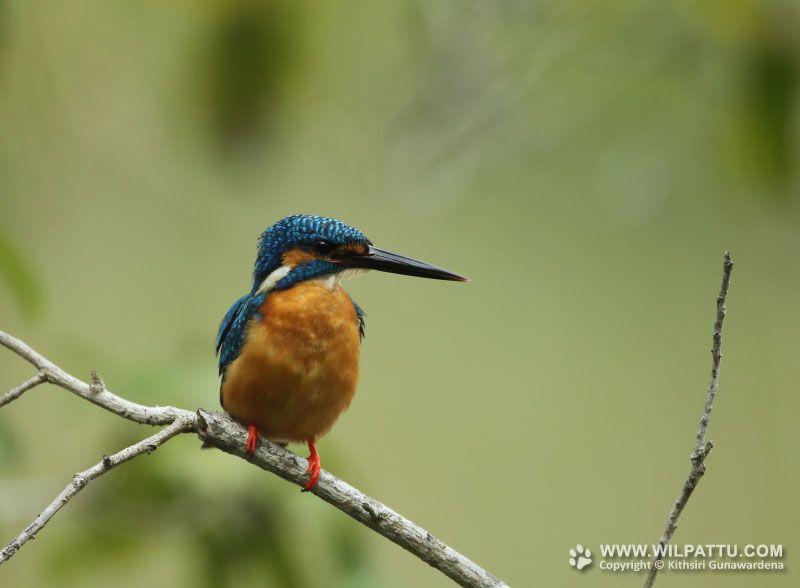
Birds ‹‹ Go Back
This is a resident species found throughout the country except in the highest hills. It has a wide global distribution and is native to many countries in Europe and Asia. It is a winter migrant to North Africa. Seven subspecies of this beautiful bird have been recognized, primarily based on differing in the hue of the upper parts and the intensity of the rufous colour of the underparts. The subspecies found in Sri Lanka and South India with bright blue upper parts is referred to as A. a. taprobana. Interestingly both the subspecies A. a. Hispidoides that breeds in New Guinea and Sulawesi and A. a. solomonensis, which breeds in the Solomon Islands, have blue ear-patches.
This species should not be confused with the Blue-eared Kingfisher Alcedo meninting, which is an extremely rare and critically endangered breeding resident. This rare species may superficially look similar to the current species but can be identified as a result of its blue ear-patch as opposed to the chestnut ear-patch of the current species and due to its much darker blue upper parts.
The conservation status of the species under reference is regarded as Least Concerned (National Red List 2012).
This is a species protected under the Fauna and Flora Protection Ordinance as amended by Act No. 22 of 2009.
I have observed this species to be a common inhabitant at all the water-associated habitats throughout the country except in the highest hills. The highest altitude at which I observed this species was Pattipola at 1,910 meters above sea level. They are rarely seen in the city of Colombo. However this beautiful fisher is still common at many localities just outside the city such as Talangama Wetlands and Kotte Marshes. In August 2000 while driving back from work around 5.30 p.m. I was thrilled to see a Common Kingfisher perched on a small stump at the edge of the water along the canal of the Beira Lake down Nawam Mawatha in Colombo. These birds can be usually seen perched on small sticks or stumps at the edges or overlooking large and small bodies of water and watching intently at the water for movements of small fish. At such localities they can easily be detected by their high pitched calls. These fast-flying birds will always make their pleasant high pitched call while flying just above the water. They also sometimes hover over the water before dropping to catch their prey.
This is a very common species in Wilpattu and can be seen and heard at all the water bodies. However due to their small size, one needs to be equipped with a long telephoto lens to be able to capture a photograph that would reflect its true beauty.





